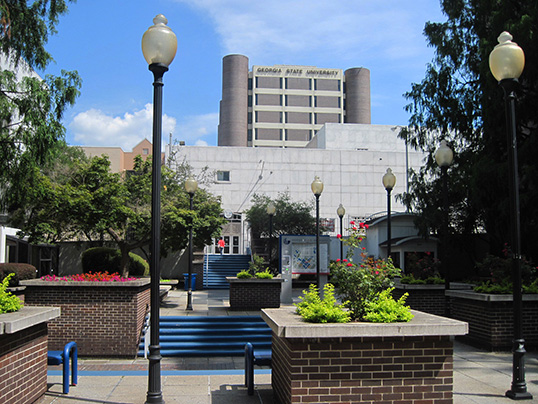I don’t believe there’s necessarily a blog I can dislike. Blogs are everyday virtual journals that people write it in expressing their thoughts out into a safe space on their own. As someone who has been writing in numerous of volumes of personal journals for years and who still is, I don’t blame someone for doing the same. Writing helps one express to where saying it aloud nearly can’t. I don’t necessarily have a preference or a favorite blog, but here’s a few that I enjoy:

http://befittingstyle.com
Befitting Style is run by Oyinkan who has been surrounded with style since her childhood as she grew up watching her mother obsess over style. This is a daily fashion blog that I’ve been subscribed to for over a year now. She talks about fashion trends, showcasing outfits and looks she wears daily and even gives insight looks on fashion shows. I believe when I was looking for a blog to help me gain a sense of what could be my signature and key looks this was one I stumbled upon and have stuck with ever since.

http://flowerroots.com
Okay, so even if I did have a favorite blog, this would be one of my selections. Flower Roots is run by Karlye Hayes, who I believed graduated from GSU not too long ago. I first followed this blog when I first discovered Karlye on Instagram through the So Worth Loving organization that promoted self-love and positivity sending out the message through t-shirts. Karlye was one of the people that was actively involved with the campaign and I’ve followed her ever since. Her blog, Flower Roots, is a deeper insight into knowing who she is. She gives advices on self-love, relationships, self-assurance, and updates on her life. Every time I read her blog, I feel refreshed because it brings out such a peaceful tone in every description. And especially during a dark time in my life on discovering who I was, this was a blog I immediately went to to seek advice and guidance that I needed.

http://nycbambi.com
Another one of my favorite blog selections is NYCBambi by Christie “Kiki” Tyler. I first discovered her on Tumblr through my dashboard when various fashion posts of her would appear, and when I actually went onto her Tumblr page, I fell in love and immediately followed her and all her other social media accounts. We’re the same age and she lives more up north and she recently has been working for a lot of companies because they love her style and how she presents and promotes their products which I find is amazing and is the modern day millennial way of promoting and advertising such companies through social media. Once again, while pursuing a fashion sense and feel for myself this is one of the blogs I relied on. I don’t necessarily rely on it for fashion anymore, but I still like to keep up with what’s in Christie’s closet.

http://blog.franchesca.net
Franchesca Ramsey, an actress and comedian, famous for being on MTV Decoded has this blog that is run through the Tumblr website. She actually has her own website which has just been relaunched, franchesca.net. I’ve followed Franchesca since earlier this year when I first saw one of her famous controversial YouTube videos. She is hilarious and truly outspoken on so many things within the media, society and injustice that occurs within these systems which is why I’m so glad to have followed her on social media because to me, she is someone who is standing her ground so that people like me don’t have to keep going through the indecency we constantly do and have done. I have religiously watched MTV Decoded, but from what I’ve already seen Franchesca doing and pursuing, I almost don’t have to (but I’ll still pursue it). Here on her Tumblr blog, Franchesca responds to fans through asks, and also writes personal text posts dealing with or expressing topics such as having anxiety, what’s trending in the world, and calling out what should be done and could be done to fix such problems within the society’s fixed standards.

http://savanaogburn.com/blog
Last but not least is a friend of my friends’ but who is soon going to be one of my friends is Savana Ogburn. She just graduated from the same high school I went before her, she will be attending SCAD, she has created her own zine, sonicblumezine.com, and is one of the most amazing and creative people I have yet to met. I discovered her when a few months ago when a couple of my friends were tagged in her pictures of them for Rookie Magazine, an online website that’s a safe places for girls and femmes to express and connect with each other, and I’ve digged her artwork ever since. Just over the summer, one of my best friends got featured on Rookie Mag for one of her pieces, and I couldn’t be more proud of him and more amazed by her. Sonic Blume is an online magazine Savana created to promote concert photography, photographers and local band music. Savana’s website, savanaogburn.com, showcases her art work and her latest projects. I’ve got in touch with her recently about meeting up and taking pictures because I really wanted to be able to create with her and also get to her and make a new friend. Once she gets settled into SCAD, we will and I cannot wait!

These were 5 blogs I really enjoyed and I hope you get to check them out, too!








